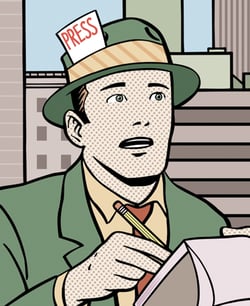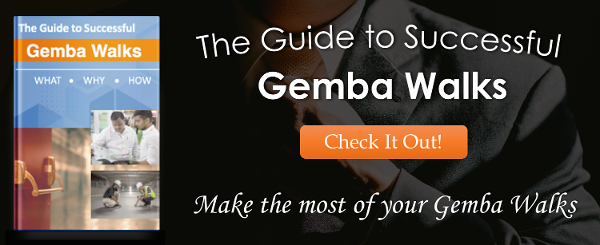 Anyone who took Journalism in high school probably remembers three important rules; don’t "bury the lede," be sure to cover “who, what, where, when, and why,” and don’t become part of the story. If you think about it, taking a Gemba Walk is very much like a journalist going to the scene of a story. In fact “gemba” is a Japanese word that means “the real place” and Japanese TV reports often say that they are, “Reporting live from gemba.” So perhaps it makes sense to think like a journalist on your next Gemba Walk.
Anyone who took Journalism in high school probably remembers three important rules; don’t "bury the lede," be sure to cover “who, what, where, when, and why,” and don’t become part of the story. If you think about it, taking a Gemba Walk is very much like a journalist going to the scene of a story. In fact “gemba” is a Japanese word that means “the real place” and Japanese TV reports often say that they are, “Reporting live from gemba.” So perhaps it makes sense to think like a journalist on your next Gemba Walk.
Don’t Bury the Lead
News writers use something called the inverted pyramid in which the most important information comes first and the information gets more detailed as the story progresses. This is because people tend to pay the most attention to headlines and first paragraphs. So what is the "lead" or the main point for your Gemba Walk? What is the one thing you want to clearly communicate or learn? That's your purpose.
Having a supervisor or executive visit the workplace can be disconcerting for employees who are not used to it. If the staff doesn’t understand that your purpose is to evaluate processes, rather than to judge the work of individual employees, you won’t be able to follow the rule about not becoming part of the story. Just like a journalist must earn the trust of their sources, so too, you must earn the trust of the employees who will be observed. Clear communication about your aim is essential.
Focus on Who, What, Where, When and Why
The 5Ws provide an excellent structure for the questions you want to ask and answer during your Gemba Walk.
- Who – Who are the people involved in the processes that you observe? Who provides input for the processes? Who are the “customers” of the process? Pro tip: You shouldn't be asking who to blame for problems...
- What – What are the inputs and outputs of the process? What obstacles inhibit flow or produce waste?
- Where – Does the space where the work is preformed conform to 5S? Are necessary materials and equipment conveniently located? Do you notice the waste of motion?
- When – Are process inputs available when needed? Is work from this process being pulled through by the next, or do outputs sit idle? Is the waste of waiting observed?
- Why - What value does this work add for the customer?
Don’t Become Part of the Story
The purpose of a Gemba Walk is observation. Even if you see opportunities for improvement and have ideas about how to make processes better, it is important to wait to consider them until after the walk is complete. As soon as you make suggestions or request changes, you lose the opportunity to document and consider the current state. You also interfere with people's ability to solve their own problems in their own workplace. Your goal is to get this story. You can help form the next one later.
Thinking like a journalist on your next Gemba Walk might help get you in the right frame of mind. When you reflect later, you’ll have all the raw facts you need to tell the story of the current state and begin the cycle of improvement. If you try it, please tell us how it goes.
Download this free guide to learn how to have Gemba Walks that actually result in improvement:



Add a Comment